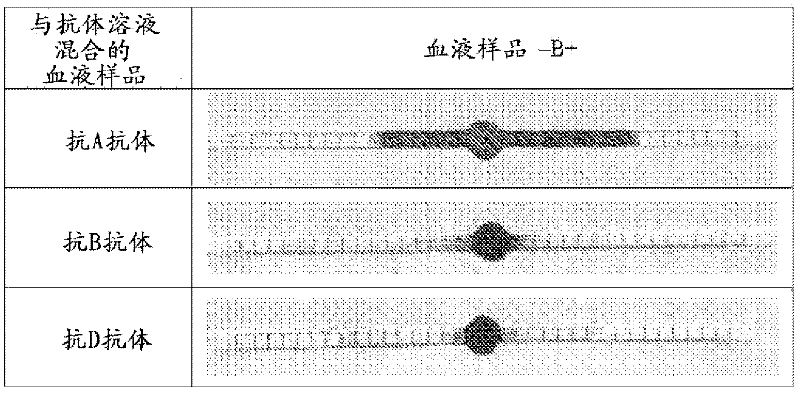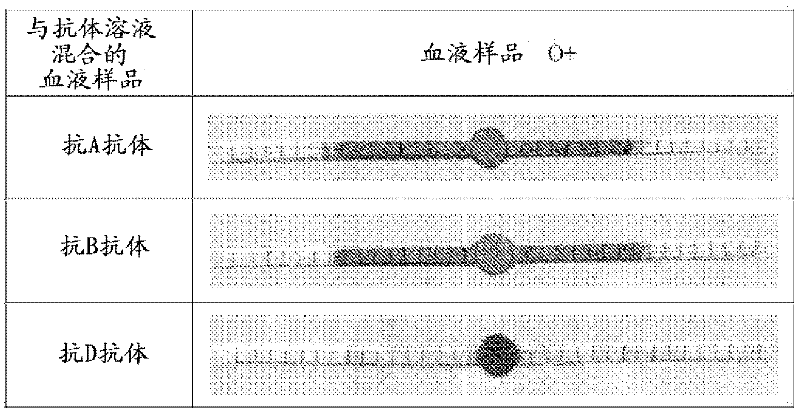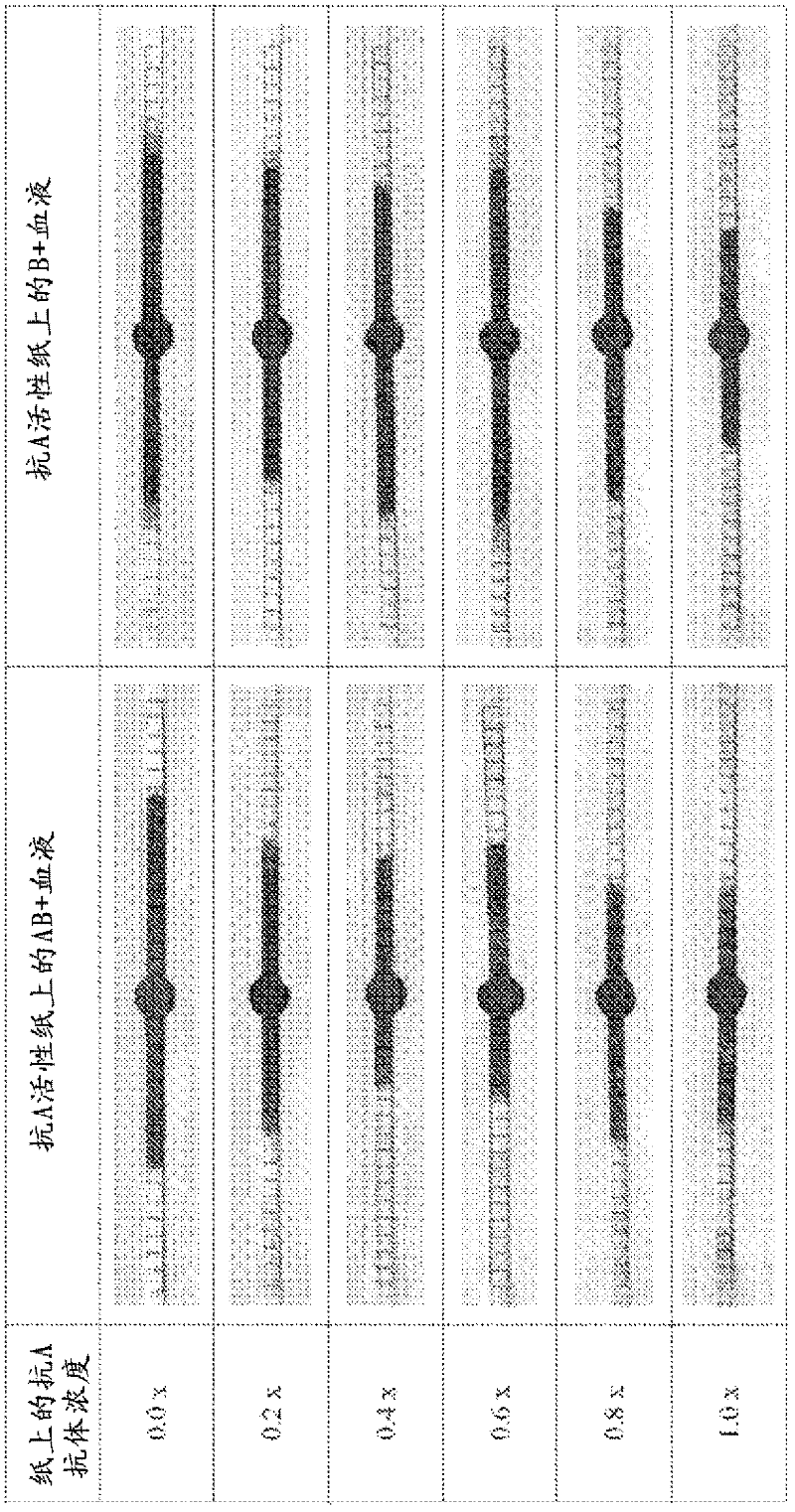Testing device for identifying antigens and antibodies in biofluids
A technology for biological fluids and testing devices, applied in biological testing, measuring devices, material analysis using immobilized reagents, etc.
- Summary
- Abstract
- Description
- Claims
- Application Information
AI Technical Summary
Problems solved by technology
Method used
Image
Examples
Embodiment 1
[0045] Example 1: Sequential blood coagulation / coagulation followed by wicking on paper: B+ (two-step method) (see figure 1 )
[0046] Antibodies A and B (Epiclone TM Anti-A, Anti-B and Anti-D; CSL, Australia) solutions. Anti-A and Anti-B are blue and yellow reagents, respectively. "B+" blood was used in this study. Blood samples were filled into plastic bottles with anticoagulant. "B+" blood was separately mixed with pure anti-A and anti-B (used as received) to prepare 100 μL of solution. Paper strips (70mm x 2mm) were made of Whatman #4 filter paper with 2mm unit markings printed on it. The strips were soaked in phosphate buffered saline (PBS). Excess PBS was removed from the strips using standard blotting paper (Drink Coster Blotting, 280GSM). The note was then placed on Reflex Paper (80GSM). Dispense 20 μL of each mixed solution in the center of the paper strip using a graduated micropipette. Photographs were taken after wicking for 4 minutes.
[0047] visible: ...
Embodiment 2
[0054] Example 2: Sequential blood coagulation / coagulation followed by wicking on paper: O+ (two-step method) (see figure 2 )
[0055] Antibodies A and B (Epiclone TM Anti-A, Anti-B and Anti-D; CSL, Australia) solutions. Anti-A and Anti-B are blue and yellow reagents, respectively. "O+" blood was used in this study. Blood samples were filled into plastic bottles with anticoagulant. Mix "O+" blood with anti-A and anti-B separately to prepare 100 μL of solution. Paper strips (70mm x 2mm) were made of Whatman #4 filter paper with 2mm unit markings printed on it. The strips were soaked in phosphate buffered saline (PBS). Excess PBS was removed from the strips using standard blotting paper (Drink Coster Blotting, 280GSM). The note was then placed on Reflex Paper (80GSM). Dispense 20 μL of each mixed solution in the center of the paper strip using a graduated micropipette. Photographs were taken after wicking for 4 minutes.
[0056] visible:
[0057] O+ blood mixed with ...
Embodiment 3
[0063] Example 3: Simultaneous blood coagulation / coagulation followed by paper wicking: effect of antigen concentration (one-step method) (see image 3 )
[0064] In another embodiment of the invention, the paper is first treated with specific antibodies, dried or conditioned prior to exposure to the pure blood sample. This embodiment provides a single step process where the only need is to deposit the blood droplet on the paper. This example also demonstrates the effect of dilute antibody solutions on the wicking and separation properties of blood on paper. Antibody dilution affects the blood (with its antigen) antibody ratio.
[0065] Antibodies A and B (Epiclone TM Anti-A and Anti-B; CSL, Australia) solution. Anti-A and Anti-B are blue and yellow reagents, respectively. "AB+" and "B+" blood were used in this study. Blood samples were filled into plastic bottles with anticoagulant. Paper strips (70mm x 2mm) were made of Whatman #4 filter paper with 2mm unit markings p...
PUM
 Login to View More
Login to View More Abstract
Description
Claims
Application Information
 Login to View More
Login to View More - R&D
- Intellectual Property
- Life Sciences
- Materials
- Tech Scout
- Unparalleled Data Quality
- Higher Quality Content
- 60% Fewer Hallucinations
Browse by: Latest US Patents, China's latest patents, Technical Efficacy Thesaurus, Application Domain, Technology Topic, Popular Technical Reports.
© 2025 PatSnap. All rights reserved.Legal|Privacy policy|Modern Slavery Act Transparency Statement|Sitemap|About US| Contact US: help@patsnap.com



